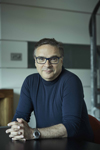

|
Who Was Brezhnev and What Did He Stand For? EXTRACT: Orlando Figes, Revolutionary Russia, 1891-1991 (Pelican, 2014), pp. 370-72. Brezhnev emerged as primer inter pares of the colourless regime that replaced Khrushchev. Politburo decisions were reached collectively and names were listed alphabetically to restore the appearance of collective leadership. Yet slowly Brezhnev became dominant. He was a creature of the system, a grey and mediocre functionary rather than a revolutionary, although once in power he developed a colourful taste for luxury cars, natty suits, hunting parties and a lifestyle more appropriate for the playboys of the Western world. Like so many apparatchiks suddenly promoted to the higher Party ranks during Stalin's purges and the war, he had more practical than intellectual capacities. He was good at building political alliances and patron-client networks of mutual support. He had extensive patronage among the regional Party leaders, many of them comrades from the 1930s when he had risen from the factory floor to the First Party Secretary in Dnepropetrovsk. No other Politburo member had such influence. But all the major players - Alexei Kosygin (Chairman of the Council of Ministers), Mikhail Suslov (the Party's ideologist), Alexander Shelepin (sometime head of the KGB and leading Stalinist) and Ivan Kapitonov (in the Moscow apparatus) - had their clientèle networks in the lower Party organizations. The Brezhnev system was a coalition of Politburo oligarchs. What united them was the preservation of the status quo. They wanted to prevent the shake-up of the Party that Khrushchev had begun, to restore a stable system of administration that would keep them at the top. They were from an older generation than the Party reformers inspired by the Twentieth Party Congress and the Khrushchev Thaw. As long as Brezhnev was in power, the Party's leaders were allowed to grow old in their posts. The average age of the Politburo rose from sixty in 1964 to over seventy in 1982. This was a gerontocracy whose only ideology was to make things stay the same. Brezhnev gave a name to this conservative idea, 'Mature Socialism', the absurd doctrine that a socialist society had been successfully created and that all that was now needed was to consolidate its gains, which he invoked when he introduced the 1977 'Brezhnev Constitution', the third and last of the Soviet regime. But at sixty years Soviet socialism was older than mature. It was at retirement age. Along with the ending of political reform there was a reversal of initiatives to loosen state controls on the economy. The Kosygin reforms, drawn up under Khrushchev and introduced in 1965, aimed to stimulate production by giving enterprises greater independence and relying more on market mechanisms within the planned economy. But they were regarded as politically dangerous, particularly after similar reforms in Czechoslovakia resulted in demands for political reform and the Prague Spring in 1968. They were killed off by the Brezhnev government. No amount of tinkering (which is what the Kosygin reforms were) could have turned around the failing Soviet economy. It was not enough to introduce reforms into the planned economy. The problem was the planned economy. But without reform the economy was doomed - along with the Soviet system - to terminal decline. Economic stagnation would not have been so damaging politically if consumer expectations had not been raised so high in the Khrushchev period. A new Party Programme in 1961 had forecast that the Soviet Union would overtake the United States' economy by 1970. It pledged that Communism would be built by 1980, ensuring 'an abundance of material and cultural benefits' so that 'everyone will live in easy circumstances'. Previously the revolution had been based on the idea of personal sacrifice for the collective good. But now that situation was reversed: the Party was acknowledging an economic obligation to the individual. It was issuing IOUs. |
© 2014 Orlando Figes | All Rights Reserved